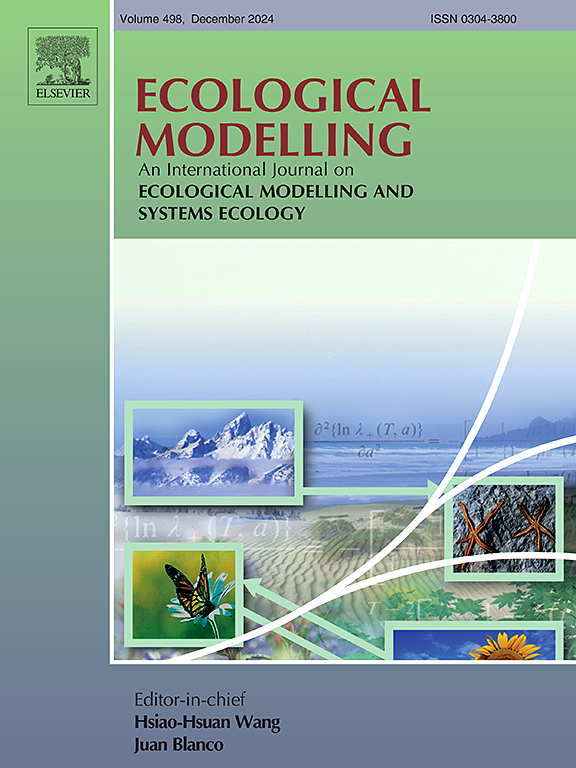The return of the Caracal Caracal caracal: 56 Years of Population Changes in Israel
IF 3.2
3区 环境科学与生态学
Q2 ECOLOGY
引用次数: 0
Abstract
Long-term studies of mesopredator populations are essential for understanding the factors driving their demographic changes and developing evidence-based conservation strategies in dynamic landscapes. Here, we present a 56-year assessment of caracal population trends in Israel. This extended period was chosen to capture long-term trends and to account for potential cyclical patterns in the population dynamics, integrating historical records with statistical modeling to examine temporal and geographical variability in abundance and habitat use. Our results reveal distinct population fluctuations, including periods of increase in the 1970s, a subsequent decline during the 1980s and 1990s, and a marked resurgence over the last two decades. However, regionally focused analyses indicate a significant long-term decline in highly urbanized areas such as Judea, suggesting that local pressures can affect abundance trends over wide spatial domains.
Species distribution modeling indicates that caracals predominantly occupy areas below 1000 m elevation, favoring grasslands, semi-arid zones, and mosaics of cultivated fields while generally avoiding urban environments. Their preference for mixed habitats not only enhances the species’ resilience but also underscores their adaptability to changing landscapes. The episodes of population decline, while concerning, also highlight the potential for recovery and the importance of conservation efforts in maintaining these mixed habitats.
Our findings underscore the importance of conserving heterogeneous habitats that can sustain caracals in the face of ongoing environmental variability. By integrating long-term population analyses with spatial modeling, this study provides a robust framework for refining protection strategies that address the species’ dynamic ecological requirements. This knowledge empowers us to make informed decisions and contribute valuable insights for broader mesopredator conservation in rapidly changing ecosystems.
野猫的回归:以色列56年的人口变化
对中掠食性动物种群的长期研究对于了解其人口变化的驱动因素和在动态景观中制定基于证据的保护策略至关重要。在这里,我们提出了一项56年来以色列野猫种群趋势的评估。选择这一较长的时期是为了捕捉长期趋势,并解释人口动态中潜在的周期性模式,将历史记录与统计模型结合起来,以检查数量和生境利用的时间和地理变化。我们的研究结果揭示了明显的人口波动,包括20世纪70年代的增长,随后在80年代和90年代的下降,以及过去20年的明显复苏。然而,以区域为重点的分析表明,在犹太等高度城市化地区,丰度长期显著下降,这表明当地压力可以影响广泛空间领域的丰度趋势。物种分布模型表明,野猫主要分布在海拔1000 m以下的地区,喜欢草原、半干旱区和农田的马赛克,一般避开城市环境。它们对混合栖息地的偏好不仅增强了物种的恢复力,而且强调了它们对不断变化的景观的适应性。人口下降的情况虽然令人担忧,但也突出了恢复的潜力和养护工作在维持这些混合生境方面的重要性。我们的研究结果强调了保护异质栖息地的重要性,这些栖息地可以在面对持续的环境变化时维持猫科动物。通过将长期种群分析与空间建模相结合,本研究为完善保护策略提供了一个强有力的框架,以解决物种的动态生态需求。这些知识使我们能够做出明智的决定,并为快速变化的生态系统中更广泛的中捕食者保护提供有价值的见解。
本文章由计算机程序翻译,如有差异,请以英文原文为准。
求助全文
约1分钟内获得全文
求助全文
来源期刊

Ecological Modelling
环境科学-生态学
CiteScore
5.60
自引率
6.50%
发文量
259
审稿时长
69 days
期刊介绍:
The journal is concerned with the use of mathematical models and systems analysis for the description of ecological processes and for the sustainable management of resources. Human activity and well-being are dependent on and integrated with the functioning of ecosystems and the services they provide. We aim to understand these basic ecosystem functions using mathematical and conceptual modelling, systems analysis, thermodynamics, computer simulations, and ecological theory. This leads to a preference for process-based models embedded in theory with explicit causative agents as opposed to strictly statistical or correlative descriptions. These modelling methods can be applied to a wide spectrum of issues ranging from basic ecology to human ecology to socio-ecological systems. The journal welcomes research articles, short communications, review articles, letters to the editor, book reviews, and other communications. The journal also supports the activities of the [International Society of Ecological Modelling (ISEM)](http://www.isemna.org/).
 求助内容:
求助内容: 应助结果提醒方式:
应助结果提醒方式:


